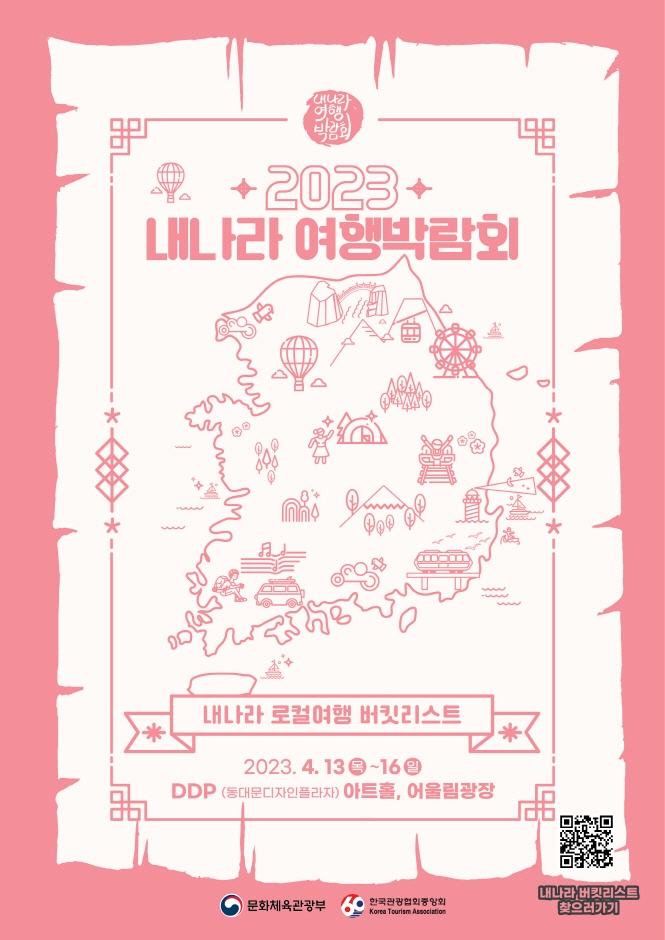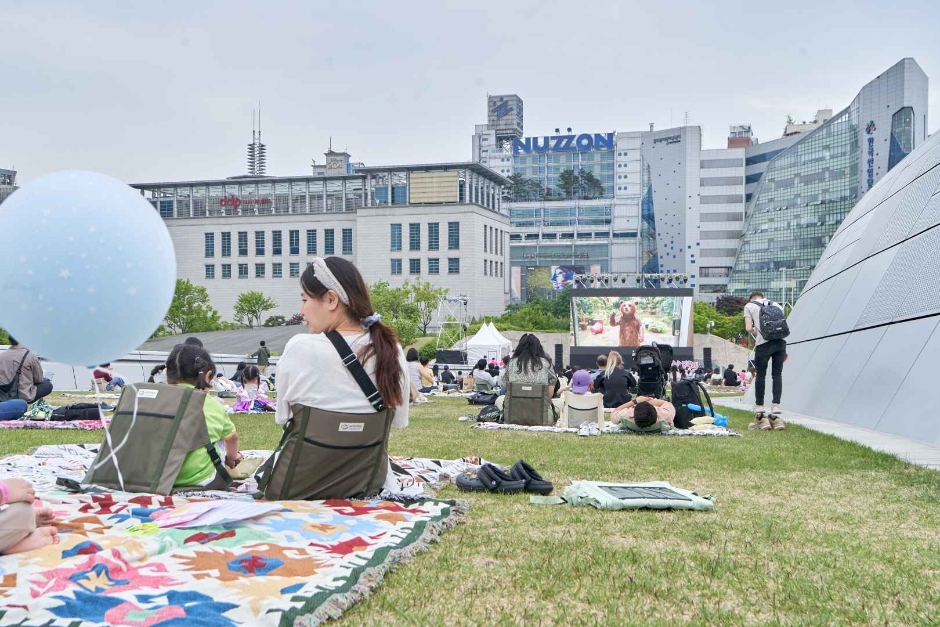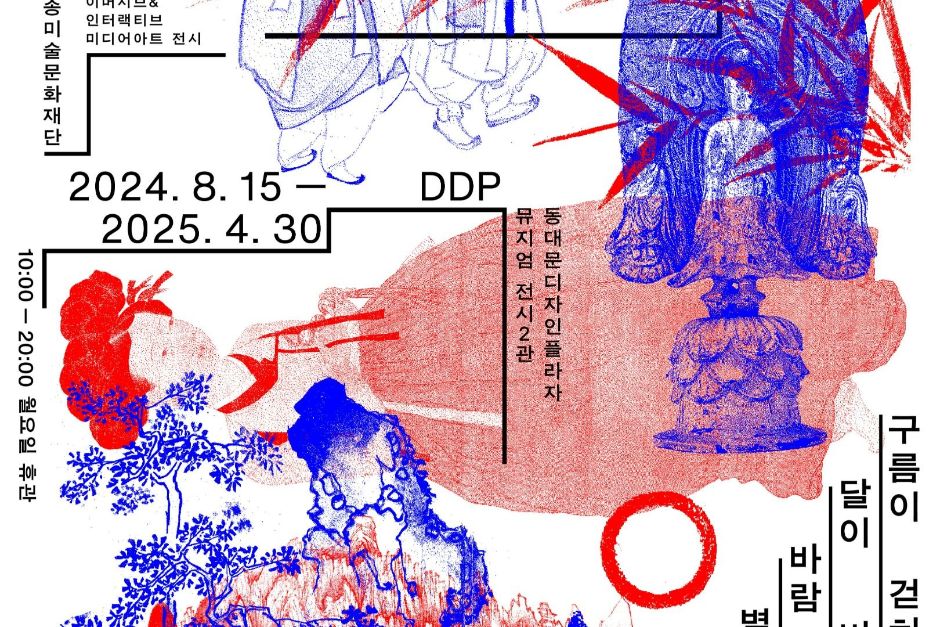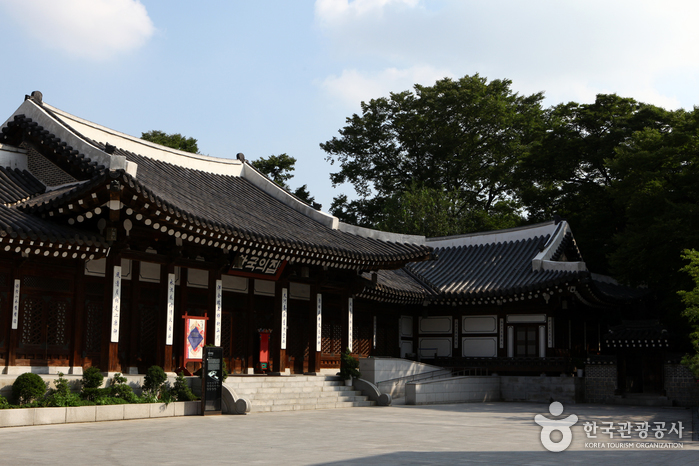Olens - Chung-Ang Univ. Branch [Tax Refund Shop] (오렌즈 중앙대)
6.8Km 2024-04-16
1F, 87-1, Heukseok-ro, Dongjak-gu, Seoul
-
Olive Young - Achasan Station Branch [Tax Refund Shop] (올리브영 아차산역)
6.8Km 2024-04-18
1F, #104, #110, and #111, 671, Cheonho-daero, Gwangjin-gu, Seoul
-
Olive Mart [Tax Refund Shop] (주식회사 올리브마트)
6.8Km 2024-04-16
1F, 229-3, Jangchungdan-ro, Jung-gu, Seoul
-
Olive Young - CJ CheilJedang Center Branch [Tax Refund Shop] (올리브영 제일제당센터)
6.8Km 2024-04-22
330, Dongho-ro, Jung-gu, Seoul
-
Korea Travel Expo (내나라 여행박람회)
6.8Km 2023-04-10
281, Eulji-ro, Jung-gu, Seoul
• 1330 Travel Hotline: +82-2-1330 (Korean, English, Japanese, Chinese) • For more info: +82-2-3445-1519
The Korea Travel Expo is a gathering of Korean regional tourism organizations, as well as travel aficionados from all over the world. It is held annually in order to help increase the national tourism volume, information exchanges, travel service quality, and local economies.
DDP Spring Festival: Design Zoo (DDP 봄축제 : 디자인 동물원)
6.8Km 2024-05-22
281 Eulji-ro, Jung-gu, Seoul
+82-2-2088-4957
DDP Spring Festival: Design Zoo features creative reimaginations of a zoo to delight visitors of all ages. The festival features large air balloons and concerts in a range of genre, as well as film showings, an animal character parade, animal train, and more. Visitors can purchase cute handmade products at the design market and tasty food at the food street.
When the clouds clear, the moon shines, the wind blows, and the star shine (구름이 걷히니 달이 비치고 바람 부니 별이 빛난다)
6.8Km 2024-11-25
281 Eulji-ro, Jung-gu, Seoul
+82-1511-1938
"When the clouds clear, the moon shines, the wind blows, and the star shine" is the first immersive media art exhibition by Kansong Art & Culture Foundation, presenting traditional Korean art, the foundation of K-culture, with a modern flair. Iconic traditional works like Miindo, A Beautiful Woman by Sin Yun-bok and Gwandong Myeongseungcheop by Jeong Seon, are reinterpreted using graphic motion, LiDAR sensors, and kinetic art. Each exhibition room features a unique scent and sound effect, offering a multi-sensory experience to visitors.
Traditional Performance at The Korea House (한국의집 전통예술공연 KOREA 심청)
6.8Km 2024-08-16
10, Toegye-ro 36-gil, Jung-gu, Seoul
• 1330 Travel Hotline: +82-2-1330 (Korean, English, Japanese, Chinese) • For more info: +82-2-2266-9101~3
The Korea House has been a venue for traditional performing arts for more than 20 years, presenting various musical performances, court dances, and folk dances such as Pungmulnori (farmers’ percussion
performance), Talchum (mask dance), Pansori (a traditional narrative vocal performance), and Sinawi (an ensemble of eight traditional musical instruments).
At Korea House, visitors can discover the diverseness and richness of Korean music and art performance. Popular and nationally recognized intangible cultural asset holders such as An Sook Seon, Park Byeong Cheon, and Lee Chun Hui perform on the stage under director Jeong Jae Man.
Korea House (한국의집)
6.8Km 2024-10-28
10, Toegye-ro 36-gil, Jung-gu, Seoul
The Korea House was opened in 1981. It is a traditional Korean building that introduces the culture and lifestyle of Koreans, where you can experience traditional architecture and a classical atmosphere. The building was built in the style of the Joseon Dynasty's Jagyeong-jeon building at the Gyeongbok Palace. It is the only building built in the traditional architectural style. You will feel its antiquity as you enter the building.
It is divided into the Haerin-gwan (a space for people to get acquainted with each other), the Traditional Theater, and three annex buildings (Munhyang-ru, Nokeum-jeong and Cheongwu-jeong). At Haerin-gwan, you can enjoy traditional music at Garak-dang and try traditional food at Sohwa-dang. In the square of Garak-dang you can view a traditional wedding (on the weekends) or people playing folk games. Also, at the Traditional Theater, about 156 seats are available, and in the afternoons Human Cultural Assets or members of the National Center for Korean Traditional Performing Arts and the National Corps members present traditional music and dances. Sinayui, Salpuri, Pansori, the Drum Dance and the Bongsan Mask Dance are the most popular programs for foreigners. The programs are all explained in English and Japanese.
In the Cultural Gift Shop you can view various crafts made by traditional craftsmen. It is always open and the crafts are for sale as well. There are pottery, ceramics, golden crafts, knots and embroidery etc; approximately 500 pieces of artwork made by craftsmen from 20 different fields. Next to the House of Korea is the Namsan-gol Hanok Village where visitors can explore traditional houses.
![Olens - Chung-Ang Univ. Branch [Tax Refund Shop] (오렌즈 중앙대)](http://tong.visitkorea.or.kr/cms/resource/16/2880016_image2_1.jpg)
![Olive Young - Achasan Station Branch [Tax Refund Shop] (올리브영 아차산역)](http://tong.visitkorea.or.kr/cms/resource/90/2878790_image2_1.jpg)
![Olive Mart [Tax Refund Shop] (올리브마트)](http://tong.visitkorea.or.kr/cms/resource/76/2878676_image2_1.jpg)
![Olive Mart [Tax Refund Shop] (주식회사 올리브마트)](http://tong.visitkorea.or.kr/cms/resource/77/2878677_image2_1.jpg)
![Olive Young - CJ CheilJedang Center Branch [Tax Refund Shop] (올리브영 제일제당센터)](http://tong.visitkorea.or.kr/cms/resource/75/2878675_image2_1.jpg)





 English
English
 한국어
한국어 日本語
日本語 中文(简体)
中文(简体) Deutsch
Deutsch Français
Français Español
Español Русский
Русский